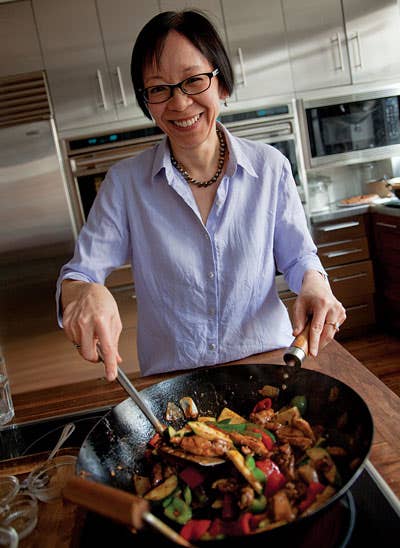
Bring on the Heat
A stir-frying scholar dispenses some expert advice in the SAVEUR test kitchen.
When we started testing the recipes for ** A Stir-Fry Education** (May 2010), we quickly realized that we'd need to make some adjustments. The recipes came from Chinese cooks, and most home kitchens in China have gas stoves that deliver a lot more heat than the kinds we have in the States. Replicating the effects of such high heat would take some doing. So, we turned to our friend Grace Young, who, in her cookbooks and her travels, has explored the ways cooks around the world have adapted stir-frying to different environments. The spicy chicken stir-fry (see ** Burmese Chile Chicken**) she made when she paid a visit to the SAVEUR test kitchen was an ideal example: given to her by a native of Myanmar with a Chinese father, it contained typically Burmese ingredients like cumin and chili powder, and not a drop of soy sauce. The dish served as a perfect platform for teaching us a few other canny adaptations—namely, how to make up for our weaker heat source. First, Grace waited until the wok (a flat-bottomed one, better adapted to Western cook tops) was searing hot before swirling in the oil. Then, after adding the meat, she left it, undisturbed, in the very center of the wok for a full minute before tossing it. "In Asia, whenever you stir-fry meat, there's so much heat that you can immediately start cooking," she explained. "But in the U.S., you have to let the meat sit, or it will never sear." Next, Grace added bell peppers and, a short while later, zucchini. Always, she added ingredients in small batches. "If you crowd the wok, you'll take down the heat," Grace said. "And once you've lost the heat, it's almost like you've killed the fire of the food itself." Those are words for a stir-fry cook to live by.
Keep Reading
Continue to Next Story










